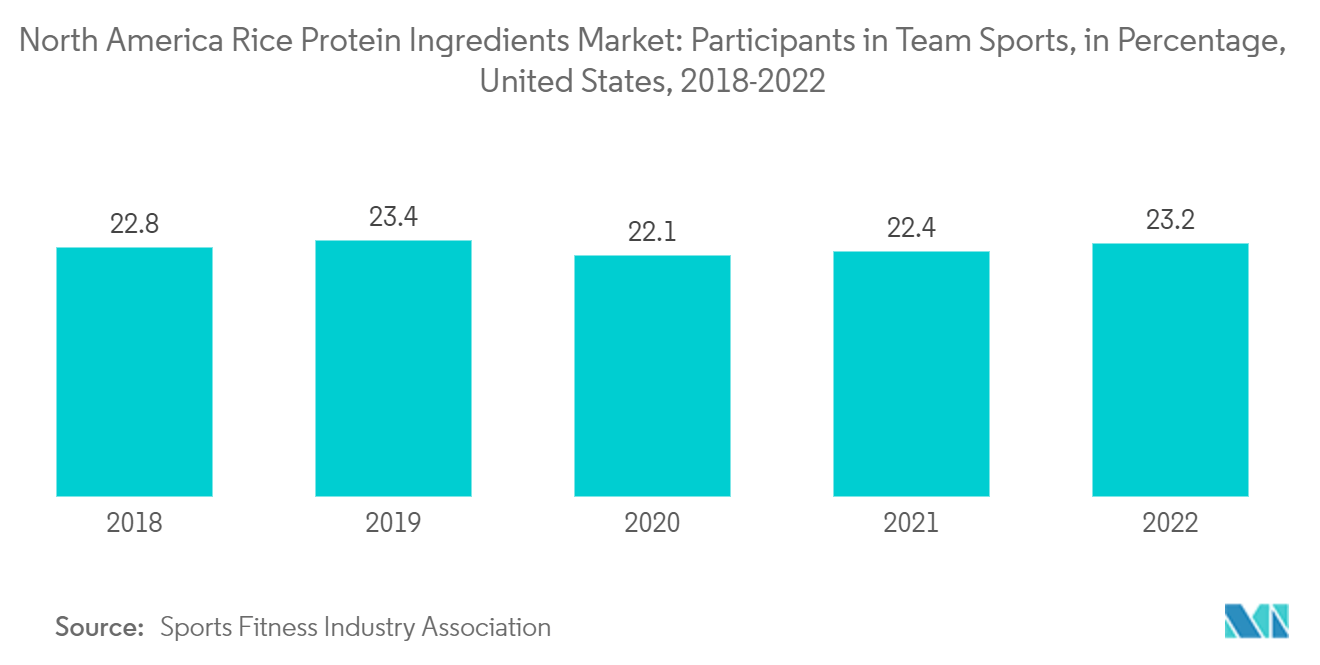Market Trends of North America Rice Protein Ingredients Industry
Prevalence of Lactose Intolerance Driving the Market
- The increasing incidences of lactose tolerance as well as various allergies associated with the consumption of soy-based products and gluten across North America is expected to drive the demand for lactose-free and gluten-free protein sources, including rice protein ingredients. According to the National Institute of Diabetes and Digestive and Kidney Diseases, ethnic and racial groups that are more likely to have lactose malabsorption include African Americans, Asian Americans, Hispanics/Latinos, etc. Hence, these consumer segments tend to prefer protein products sourced from plants like rice proteins which could drive the market studied during the forecast period.
- Rice protein is becoming increasingly popular due to its low-glycemic content and its nutritional value as an alternative for those with lactose intolerances. According to ProCon Britannica Org, in 2022, approximately 36% of the United States population had lactose intolerance, leading to an increased need for alternative proteins such as rice protein. Rice-based formulas are especially popular among children with cow's milk allergy because they are a better alternative to soy milk, as polished rice protein has a human digestibility rate of 86-90%.
- As rice protein ingredients are lactose-free, gluten-free, and are available with non-GMO and organic claims. Hence, manufacturers have been incorporating clean-label products into their products to cater to the growing demand for the same. Meanwhile, the consumption of sports nutrition has increased among fitness enthusiasts and active lifestyle consumers as it aids in gaining energy and muscle and supports weight management.
- A large number of customers residing across North America tend to perceive lactose-free and gluten-free sports nutrition products as healthy. According to the Sports and Fitness Industry Association, in 2022, 23.2% of individuals residing across the United States participated in team sports. Hence, the acceptance of sports and fitness activities is also expected to boost the protein-rich food demand, which could, in turn, create opportunities for the growth of rice protein ingredients in North America.

Food & Beverages as the Largest Segment by End-User
Rice protein is widely used across the food and beverage industry across the region. It is used in protein bars, meals, fortified beverages, and other such products. As the region has been witnessing a rise in demand for fortified food and beverages, this trend is expected to drive the demand for rice protein ingredients.
Furthermore, the high-protein trend is gaining a foothold across North America as protein claims on food and drink launches continue its growth path. North American consumers are actively seeking more protein in their meals, beverages, and snacks. Additionally, socioeconomic trends like growing urbanization, rising incomes, and aging populations are ultimately what is driving the increased protein consumption that is resulting from this population rise. Plant-based diets are advised by organizations like the World Cancer Research Fund (WCRF) and the World Health Organization.
Due to the ongoing vegan trend, customers across North America tend to look for plant-based meat and dairy alternative products which could create lucrative opportunities for the rice protein ingredients market across the region. For instance, according to The Good Food Institute, in the year 2022, the sales value of vegan milk was valued at approximately USD 2,800 million whereas the sales of plant-based yogurt were valued at USD 425 million. The ongoing consumer demand for high protein/protein-rich food and beverages is driving the application of rice protein ingredients actively across various end-user food and beverage industries in North America.


